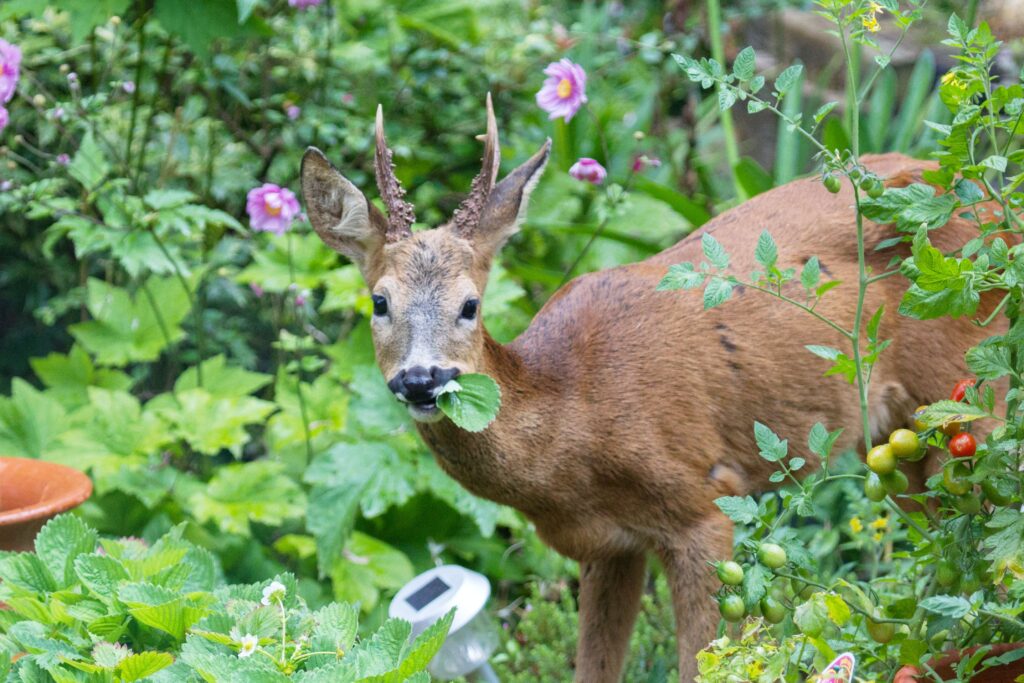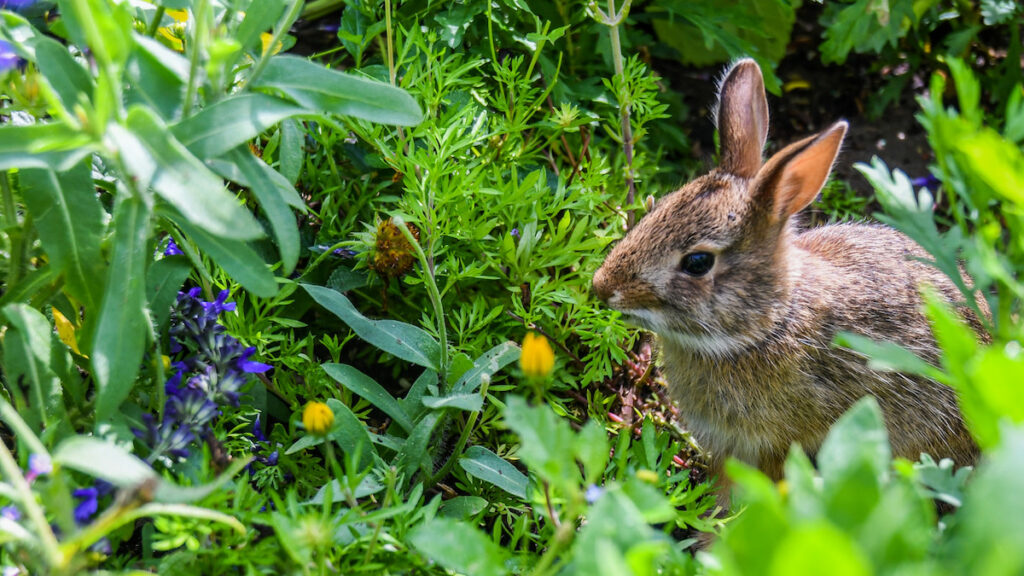The Colorado Front Range, with its picturesque views and varied climate, offers an ideal backdrop for beautifully landscaped gardens. However, deer and rabbits, though charming to observe, can wreak havoc on our carefully curated outdoor spaces. In this article we will talk about the specific ways these animals can damage your landscape and what you can do to protect your investment.

Tree and Shrub Damage

One of the most significant problems caused by deer is “browsing,” where they eat the tips of branches and buds. This browsing can distort the shape of trees and shrubs, affecting their aesthetic and health. Additionally, during the rutting season in the fall, male deer (bucks) rub their antlers against the trunks of young trees to mark their territory and shed their velvet. This rubbing can strip bark, leading to girdling, which interrupts the flow of nutrients and can kill the tree.
Rabbits also cause tree and shrub damage, primarily through their gnawing. They tend to chew on the bark of young trees and shrubs, especially in the winter when other food sources are scarce. This gnawing can girdle a tree, preventing the flow of water and nutrients and ultimately killing the tree. Rabbits can also damage ornamental plants, leaving unsightly marks and stunted growth.
Garden and Flower Bed Damage
Deer are especially attracted to gardens and flower beds because they offer a buffet of tender, nutritious plants. They can quickly decimate flowers, vegetables, and herbs, often overnight. Their browsing can leave gardens looking ragged and unkempt, and their presence can deter the growth of new plants.

Similarly, rabbits are drawn to the lush vegetation in gardens and flower beds. They tend to focus on low-growing plants, making them a particular threat to ground covers and perennials. The damage they cause can be extensive, as they often eat plants down to the ground, preventing regrowth.
Mitigation Strategies
To protect your landscape from deer and rabbit damage, consider implementing the following strategies:
- Fencing: Erecting a fence is one of the most effective ways to keep deer and rabbits out of your garden. For deer, the fence should be at least 8 feet tall, although 6-7 feet can typically be a good enough deterrent. A 2-3 foot tall fence is enough to deter rabbits.
- Repellents: Organic based repellents designed to deter deer and rabbits are readily available. These can be sprayed directly on plants and need to be reapplied fairly regularly, especially after rain.
- Plant Selection: Choose plants that are less attractive to deer and rabbits. Reference our Deer Resistant Plant Guide!
- Physical Barriers: Use netting or wire mesh to protect individual plants or small garden areas.
- Scare Tactics: Motion-activated sprinklers, lights, or noise-makers can help scare away deer and rabbits, although their effectiveness may diminish over time as the animals become accustomed to them.
By understanding the specific ways deer and rabbits can impact your landscape and implementing these strategies, you can enjoy a beautiful, thriving garden in Colorado’s Front Range.
Get In Touch
To schedule a consultation or request services please call 303-245-9166, send an email to information@nativeedgelandscapes.com or Get In Touch through our website. One of our Customer Care Representatives will be happy to help.
Learn More

